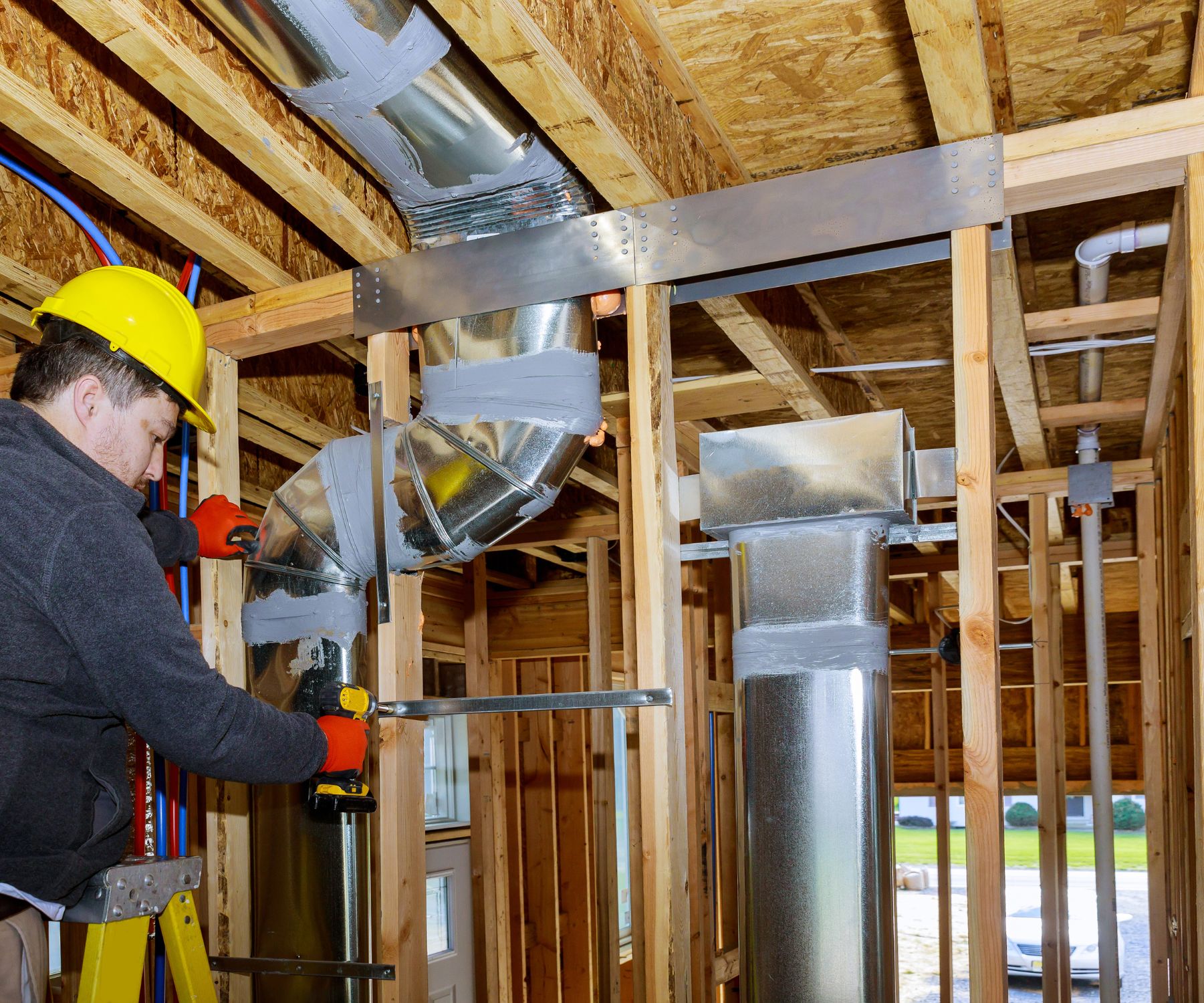Table of Contents
Is Using UV Light in your HVAC worth it?
Installing UV lights in HVAC systems can significantly improve air quality by neutralizing harmful microorganisms. However, potential drawbacks include the initial installation cost and the limited purification scope, as UV lights do not filter particulates and may produce ozone. Weighing these benefits against the cons is crucial in deciding on the integration of UV technology into your HVAC setup.
| Pros of UV light in HVAC | Cons of UV light in HVAC |
|---|---|
| Kills bacteria, viruses, and other microorganisms that can cause health problems | Can be expensive to install and maintain |
| Helps prevent the growth of mold and mildew in HVAC systems | UV light can be harmful to humans and pets if exposed directly |
| Improves indoor air quality | UV light effectiveness can diminish over time and may require replacement |
| Increases HVAC system efficiency and longevity | Some types of HVAC systems may not be compatible with UV light installations |
Pros and Cons of UV Light in HVAC
UV in HVAC Benefits
One of the primary benefits of UV light in HVAC is its ability to kill bacteria, viruses, and other microorganisms that can cause health problems.
By neutralizing these harmful pathogens, UV light can improve the quality of the air in your home or business and reduce the risk of illness.
UV light can also help prevent the growth of mold and mildew in HVAC systems.
These fungi can thrive in moist, warm environments like air conditioning coils, and can cause respiratory problems, allergies, and other health issues.
UV light can kill mold and mildew spores, preventing them from spreading and improving overall indoor air quality.
Another advantage of UV light in HVAC is that it can increase system efficiency and longevity by keeping coils and other components clean.
When dust, dirt, and other debris accumulate on coils, it can reduce the efficiency of the system and cause it to work harder than necessary.
By eliminating these contaminants with UV light, HVAC systems can operate more efficiently and last longer.
Cons of UV Light in HVAC
While there are many benefits to using UV light in HVAC, there are also some potential drawbacks.
For one, UV light can be expensive to install and maintain.
Depending on the size and complexity of your HVAC system, installing UV light can be a significant investment.
Additionally, UV lamps may need to be replaced periodically to ensure they continue to function effectively.
Another concern with UV light in HVAC is that it can be harmful to humans and pets if exposed directly.
While the amount of UV radiation emitted by HVAC systems is typically very low, prolonged exposure can still cause skin and eye damage.
For this reason, it’s important to follow proper safety protocols when installing and maintaining UV lamps in HVAC systems.
Finally, some types of HVAC systems may not be compatible with UV light installations.
For example, systems with coated or painted surfaces may not be suitable for UV lamps, as the coatings can block the light from penetrating the surface.
 What are the most strategic places to install UV Light in HVAC
What are the most strategic places to install UV Light in HVAC
- Air Handling Units (AHUs): UV lights placed in AHUs disinfect the air as it passes through, reducing the overall microbial load. This helps ensure that the air distributed throughout the building is cleaner, contributing to healthier indoor environments.
- Cooling Coils and Drain Pans: These areas are prone to moisture and can harbor mold and bacteria. UV lights installed here directly target these microorganisms, preventing their growth. This not only improves air quality by reducing mold spores and bacteria in the circulated air but also maintains the efficiency of the HVAC system by keeping the coils clean, ensuring optimal heat exchange and reducing energy consumption.
- Supply Ducts: Installing UV lights in the supply ducts treats the air one more time before it enters the occupied spaces, offering an additional layer of disinfection. This can be particularly beneficial in settings that require high levels of cleanliness, such as hospitals or laboratories.
- Return Air Ducts: Placing UV lights in the return air ducts helps to minimize the recirculation of pathogens and contaminants back into the air handling unit and throughout the building. By disinfecting the air before it’s mixed with fresh air and recirculated, the overall indoor air quality is improved.
Each location targets different aspects of air quality and system efficiency: AHUs and ductwork focus on treating the air, while cooling coils and drain pans target surface disinfection to prevent microbial growth that can affect air quality and system performance.
Most Strategic?
If you have only one or two UV lights to install in your HVAC system, targeting the cooling coils and drip (or drain) pans would be among the best choices for several reasons:
- High Risk for Mold Growth: These areas are prone to moisture accumulation, making them ideal environments for mold and bacteria to thrive. By focusing on these spots, you can directly address the primary conditions that facilitate mold growth.
- Impact on Air Quality: Mold and bacteria growth on the cooling coils and in the drip pans can significantly affect the air quality, as these microorganisms can be dispersed into the air circulated throughout the building. Using UV lights to minimize growth in these areas can help maintain healthier indoor air.
- System Efficiency: Mold growth on the cooling coils can reduce the HVAC system’s efficiency by insulating the coils and inhibiting heat exchange. Keeping the coils clean with UV light can help maintain the system’s efficiency and potentially reduce energy costs.
By positioning UV lights to irradiate the cooling coils and the area around the drip pans, you can effectively reduce the microbial load in these critical areas, helping to prevent mold growth, maintain air quality, and ensure the efficient operation of the HVAC system.
Best UV Light for HVAC System
- Whole-home air purification: The REME HALO is installed within your HVAC system, potentially purifying air throughout your entire living space.
- Reduces airborne contaminants: It reportedly uses proprietary technology to target pollutants like bacteria, viruses, mold, and odors.
- Silent operation: Many users commend its quiet operation, making it suitable for homes and businesses.
- Easy to maintain: Replacing the cell is mentioned to be a simple process by some customers.
- Potential health benefits: Some users report improved air quality, reduced allergy symptoms, and a fresher overall environment. See the Reme Halo by RGF here.
Safety Considerations When Using UV Light in HVAC
To ensure safe and effective use of UV light in HVAC systems, it’s important to follow proper safety protocols.
This includes installing UV lamps correctly, using shielding and warning signs to prevent accidental exposure, and wearing appropriate personal protective equipment when working on or around UV installations.
Proper maintenance is also critical to ensure the continued effectiveness of UV lamps in HVAC systems.
This includes regularly cleaning the lamps and replacing them when necessary, as well as ensuring that they are positioned correctly within the system.
 Installation of UV Lamps in HVAC Systems
Installation of UV Lamps in HVAC Systems
Proper installation of UV lamps in HVAC systems is critical to ensure their effectiveness and safety. Here are some key considerations to keep in mind:
1. Hire a qualified professional
UV lamps should be installed by a qualified HVAC technician who has experience with UV technology.
A professional installer can ensure that the lamps are positioned correctly and that the wiring is done safely.
2. Choose the right location
UV lamps can be installed in several locations in an HVAC system, such as in the air handler, ductwork, or near the coil.
The location will depend on the type of system and the specific needs of the building.
It’s important to choose a location that will provide optimal coverage of the air flowing through the system.
3. Determine lamp type and quantity
The type and quantity of UV lamps needed will depend on the size of the HVAC system and the level of air disinfection required.
A qualified installer can help determine the appropriate lamp type and quantity.
4.Install the lamps correctly
Once the location and lamp type and quantity have been determined, the lamps can be installed.
UV lamps should be installed in a way that minimizes exposure to humans and pets, as direct exposure to UV radiation can be harmful.
Shielding and warning signs can be used to prevent accidental exposure.
5. Connect the power supply
After the lamps are installed, they need to be connected to the power supply.
This should be done by a qualified professional to ensure that the wiring is done safely and in compliance with local electrical codes.
6.Test the lamps
Once the lamps are installed and connected, they should be tested to ensure that they are functioning properly.
A professional installer can perform a test to verify that the lamps are emitting the correct amount of UV radiation.
FAQ
Can UV light in HVAC systems help with allergies?
Yes, UV light can help reduce the presence of allergens in indoor air, such as mold spores and dust mites.
How often do UV lamps need to be replaced in HVAC systems?
It varies depending on the type of lamp and the manufacturer’s recommendations, but typically every one to two years.
Is UV light in HVAC systems safe for humans and pets?
While the amount of UV radiation emitted by HVAC systems is typically very low, prolonged exposure can still cause skin and eye damage.
It’s important to follow proper safety protocols when installing and maintaining UV lamps in HVAC systems.
Can UV light in HVAC systems damage the equipment?
No, when properly installed and maintained, UV light should not cause damage to the HVAC system.
Will UV light in HVAC systems eliminate all microorganisms?
While UV light is effective at killing many types of microorganisms, it may not be effective against all strains or types.
Does installing UV light in my HVAC system require professional help?
Yes, professional installation is recommended to ensure the UV light is correctly positioned for maximum effectiveness and safety.
Can UV lights in HVAC systems reduce energy costs?
By maintaining cleaner coils and components, UV lights can improve system efficiency, potentially leading to lower energy costs.
Are there different types of UV lights for HVAC systems?
Yes, there are various types of UV lights available, including coil sterilization lights and air sterilization lights, each designed for specific applications within the system.
How do I know if a UV light is working in my HVAC system?
Some UV light systems have indicators or viewing ports to check operational status, but it’s best to have regular maintenance checks by a professional.
Can UV light in HVAC systems help with odor control?
Yes, by reducing microbial growth, UV lights can also help minimize odors caused by mold and bacteria in the system.



 What are the most strategic places to install UV Light in HVAC
What are the most strategic places to install UV Light in HVAC
 Installation of UV Lamps in HVAC Systems
Installation of UV Lamps in HVAC Systems